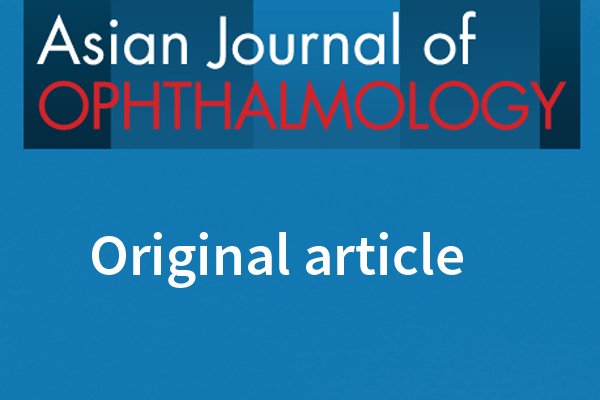Prevalence of dengue-related fundus and macular optical coherence tomography findings among inpatients in a regional referral hospital
Abstract
Purpose: To investigate the prevalence of fundus and macular optical coherence tomography (OCT) findings, and the spectrum of dengue-related fundus presentation in a Malaysian tertiary hospital. The associations between platelet count and haematocrit level with fundus and macular OCT findings were also investigated.
Design: Cross-sectional study.
Methods: The study was conducted at Hospital Raja Permaisuri Bainun, Ipoh, from June to August 2015. Patients who consented to participate underwent a comprehensive ocular examination. Examination included a best-corrected distance (6 m) and near visual acuities, standard black-on-white Amsler chart testing, pupillary light reflex, fundus examination, followed by dilated fundus photographs and OCT of the macula.
Results: A total of 134 patients were included in the study. The prevalence of positive fundus finding and macular OCT finding was 35% (95% confidence interval [CI]: 27%, 43%) and 13% (95% CI: 8%, 19%), respectively; 62 eyes of 47 patients had positive fundus findings, whereas 30 eyes of 18 patients had positive macular OCT findings. Scotoma (p < 0.001), near vision disturbance (p = 0.04), and abnormal Amsler findings (p < 0.001) were significantly associated with presence of macular OCT findings compared to absence of macular OCT findings. In the total of 268 eyes, the two most common fundus findings were vessel tortuosity (53 [20%]) and yellow subretinal dot (28 [10%]). Out of 30 eyes, diffuse retinal thickening was the most frequent OCT finding (22 [73%]), followed by 4 (13%) with foveolitis, 3 (10%) with cystoid macular oedema and 1 (3%) with submacular fluid. Platelet count and haematocrit were not associated with abnormal fundus or macular OCT manifestation in patients suffering from dengue fever.
Conclusion: Our study revealed that the prevalence of clinical fundus and macular OCT findings among dengue inpatients was higher when compared to other countries, especially during dengue outbreaks. Furthermore, the spectrum of fundus and macular OCT findings in our population can be varied.
References
Centers for Diseases Control and Prevention. DF fact sheet—CDC division of vector-borne infectious diseases. http://www.cdc.gov/dengue/epidemiology/. Accessed July 28, 2010.
WHO Western Pacific. Emerging disease surveillance and response. http://www.wpro.who.int/ emerging_diseases/DengueSituationUpdates/en/. Accessed December 29, 2015.
Bernama. At least 20 dengue cases every day in Perak this year. https://www.malaysiakini.com/news/318043#ixzz4MsTXE6cE. Accessed November 1, 2015.
Loh BK, Bacsal K, Chee SP, et al. Foveolitis associated with dengue fever. Ophthalmologica. 2008;222(5):317-320.
Sanjay S, Wagle AM, Au Eong KG. Optic neuropathy associated with dengue fever. Eye. 2008;22: 722-724.
Preechawat P, Poonyathalang A. Bilateral optic neuritis after dengue viral infection. J Neuroophthalmol. 2005;25:51-52.
Kanungo S, Shukla D, Kim R. Branch retinal artery occlusion secondary to dengue fever. Indian J Ophthalmol. 2008;56:73-74.
Yip VC, Sanjay S, Koh YT. Ophthalmic complications of dengue fever: a systematic review. Ophthalmol Ther. 2012;1:2. doi:10.1007/s40123-012-0002-z.
Gupta A, Srinivasan R, Setia S, Soundravally R, Pandian DG. Uveitis following dengue fever. Eye. 2009;23:873-876.
Chan DP, Teoh SC, Tan CS, et al; The Eye Institute Dengue-Related Ophthalmic Complications Workgroup. Ophthalmic complications of dengue. Emerg Infect Dis. 2006;12:285-289.
Teoh SC, Chan DP, Nah GK, et al. Eye institute dengue-related ophthalmic complications workgroup. A re-look at ocular complications in dengue fever and dengue haemorrhagic fever. Dengue Bull. 2006;30:184-193.
Teoh SC, Chee CK, Laude A, et al. Optical coherence tomography patterns as predictors of visual outcome in dengue-related maculopathy. Retina. 2010;30(3):390-398.
Kapoor HK, Bhai S, John M, Xavier J. Ocular manifestations of DF in an East Indian epidemic. Can J Ophthalmol. 2006;41:741-746.
Gilman J, Myatt MA. EpiCalc 2000 v1.02: A Statistical Calculator for Epidemiologists. Llanidloes, Mid Wales: Brixton Health; 1998.
World Health Organization. Dengue: Guidelines for Diagnosis, Treatment, Prevention and Control. Geneva, Switzerland: World Health Organization; 2009.
Ministry of Health Malaysia. Clinical Practice Guidelines: Management of Dengue Infection in Adults; 2008.
Williamson DR, Albert M, Heels-Ansdell D, et al. Thrombocytopenia in critically ill patients receiving thromboprophylaxis: frequency, risk factors, and outcomes. Chest. 2013;144:1207.
Su DH, Bascal K, Chee SP, et al. Prevalence of dengue maculopathy in patients hospitalized for dengue fever. Ophthalmology. 2007;114:1743-1747.
Bacsal K, Chee SP, Cheng CL, Flores JV. Dengue-associated maculopathy. Arch Ophthalmol. 2007;125:501-510.
Chee E, Sims JL, Jap A, et al. Comparison of prevalence of dengue maculopathy during two epidemics with differing predominant serotypes. Am J Ophthalmol. 2009;148(6):910-913.
Malhotra R, Singh L, Bundela R, et al. Retinal profile: a clinical indicator of severity in dengue fever in a suburban Indian environment. Trop Doct. 2014;44(3):143-147.
Tan P, Lye DC, Yeo TK, et al. A prospective case-control study to investigate retinal microvascular changes in acute dengue infection. Sci Rep. 2015;5:17183. doi:10.1038/srep17183.
Balmaseda A, Hammond SN, Pérez L, et al. Serotype-specific differences in clinical manifestations of dengue. Am J Trop Med Hyg. 2006;74:449-456.
Carraro MC, Rossetti L, Gerli GC. Prevalence of retinopathy in patients with anemia or thrombocytopenia. Eur J Haematol. 2001;67:238-244.

Copyright (c) 2019 Mee Ai Loh, Mei Fong Chong, Umi Kalthum MN, Hong Bee Ker

This work is licensed under a Creative Commons Attribution 4.0 International License.
Authors who publish with this journal agree to the following terms:
- Authors retain copyright and grant the journal right of first publication, with the work twelve (12) months after publication simultaneously licensed under a Creative Commons Attribution License that allows others to share the work with an acknowledgement of the work's authorship and initial publication in this journal.
- Authors are able to enter into separate, additional contractual arrangements for the non-exclusive distribution of the journal's published version of the work (e.g., post it to an institutional repository or publish it in a book), with an acknowledgement of its initial publication in this journal.
- Authors are permitted and encouraged to post their work online (e.g., in institutional repositories or on their website) prior to and during the submission process, as it can lead to productive exchanges, as well as earlier and greater citation of published work (See The Effect of Open Access).


